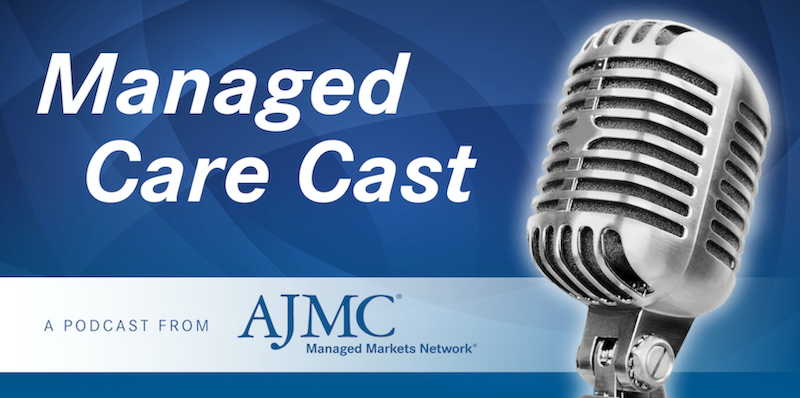Video
Wellness Programs for Employees With Migraines
Key characteristics of a successful wellness program for patients with migraines.
Transcript:
Neil Goldfarb: Many employers now have wellness programs. Many are now calling them well-being programs because we’ve moved away from just focusing on physical activity and healthy eating to things like financial wellness, and social isolation, and addressing loneliness, and other things like that.
Most large self-funded employers do have some sort of wellness or well-being program in place.
Typically, I don’t think they’re singling out migraine or addressing migraine. All of those programs do still have a major focus on healthy lifestyle—eating right, getting exercise, engaging socially, those kinds of activities. Will that help people with migraine? Absolutely. Should we be thinking more about are there additional components of a wellness strategy that would better address migraine? Yes, but that might not fit in with the general wellness program.
As an example, there are certain foods that from a wellness perspective are perfectly acceptable, but then from a migraine perspective, are migraine triggers. We want to make sure that people who suffer from migraine understand what are those food triggers, how can they avoid them?
That’s not going to come up in the typical wellness program. As an employer there’s a question of, should you expect your vendor to also have expertise in migraine and to provide special services for migraine education? Or is that something that is worth your carving out to somebody who’s better able to handle that? Many employers have registered dietitian programs as part of their wellness strategy.
Again, registered dietitians should know what are the specific food triggers for migraine. Why not encourage the registered dietitians to ask about migraine or headache, and then to say, “By the way, did you know that these foods should be avoided?”
There are things that employers can do if they don’t want to create a totally separate program to better address migraine within the existing wellness structure.
Outcomes for wellness programs are highly variable. There are people who spend lifetimes doing research on wellness programs and will swear that wellness programs have a significant return on investment [ROI] and improve patient outcomes. There are other people who’ve also spent a lifetime doing research on wellness programs who are saying that it doesn’t have any positive benefit in terms of return on investment. There may be other benefits like employee goodwill or employee engagement, but from a strict ROI perspective, the argument doesn’t exist.
Wellness programs can work and have a positive return if you do them right. And I’ve seen lots of very successful wellness programs that do get high levels of engagement, that do get high levels of behavior change, that do have significant periods of follow-up.
There are different outcomes that should be measured that go well beyond participation to, in general for wellness programs, healthy weight, avoidance of diabetes. For migraines specifically, we do have a set of outcome measures. I don’t know that they should be incorporated into a routine wellness program. We would encourage employers who have a program specific to migraine to be measuring some of the key outcomes like frequency of migraine episodes, duration of migraine episodes, severity of migraine episodes, lost productivity, including absenteeism and presenteeism. And then the employers can also measure a direct cost impact.
Wellness programs have had variable success, and I think part of that is it relates to how well they were done and who was at the table as the wellness program was developed. One of the worst things that an employer can do is contract with a wellness vendor and then just wash their hands of it, let the wellness vendor do their thing. I think at the very core if an employer implements a wellness program with a vendor, they need to hold that vendor accountable and periodically meet with that vendor, and also let the employees know that they can report to the employer any issues they’re having with the wellness program. I’d say the employers have to be engaged.
There are times when it makes sense to involve the health plan. Even if you’re a self-funded employer, health plans many times have additional wellness resources available, such as subsidized gym memberships, or subsidized nutritional counseling. And so employers I think, particularly larger self-funded employers, are pretty savvy at knowing what questions to ask of the health plans regarding what they’re offering, how that might work with a vendor.
Now you’ve got 3 different stakeholders at the table—the health plan; you’ve got the employer; and you’ve got some wellness vendor. You may have several different wellness vendors addressing different aspects of wellness. You may have a mental health wellness vendor separate from a physical health vendor.
You may have in addition then other stakeholders who need to be involved. Maybe you are working with a very large provider organization, and maybe there’s an organization that’s working your worksite health center. You have to think about where are the touch points for the patient? Ultimately we want care to be patient-centered. We want to be sure that all these stakeholders are working together, talking to each other, and that we’re ultimately, as the employers, steering the ship. We need to take responsibility for coordinating all of our vendors and subcontractors to make sure that we’re offering a high-quality program and monitoring results to make sure that our investment is justified.
Many employers as they develop wellness strategies now for migraine populations are thinking about how will that be evaluated, and I’ve mentioned some of the outcome measures that can be looked at.
When you are an employer and you’re developing a program, you always need to think about what’s the evaluation strategy. There are so far very limited results from these migraine programs. I think it’s a question of timing. The idea of addressing migraine is fairly new. The idea of having a migraine program in place and knowing what works is even newer. The idea of evaluating that rigorously and following a population for a period of time, we have employers who have implemented programs but we don’t yet have all the outcomes data. I think if we talk in a year from now, hopefully there will be more data available that say: Implementing a migraine program yields higher engagement, higher satisfaction, better outcomes, including lower impact of migraine on the workforce. I don’t think we are there yet.

How Can Employers Leverage the DPP to Improve Diabetes Rates?



